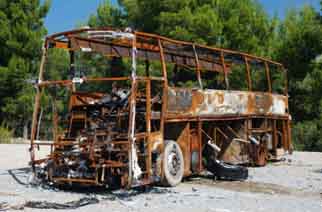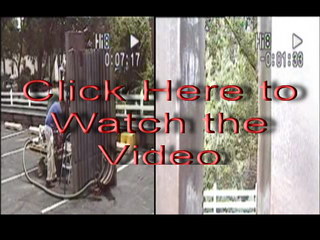During an early summer morning a bus driver driving a passenger bus left a resort in Atlantic City, New Jersey to pick up passengers at an airport and then return back to Atlantic City. On the trip to the airport the driver complained that the steering started to become stiff or rigged. At the airport terminal the driver had the bus evaluated by a mechanic and although the fluid was a little low in the power steering reservoir, the mechanic stated that the bus was fine for operation. The driver then picked up the passengers and headed back to the resort. On the drive back the driver stated that the steering became rigid and stiff again but this time the driver saw smoke and flames in the rear of bus.
The driver immediately pulled over and the passengers were evacuated from the bus, some with injures; the bus became completely engulfed in flames as was a total loss. At the recovery scene, the fire marshal and inspector filed a report that the source of the fire was the power steering pump.
CED was retained by the power steering pump manufacturer to support the defense that the fire was not caused by the power steering unit but by a hose or artery leading to the pump. The CED engineers performed an inspection on the pump and did not see any deterioration or problems with the pump and CED was able to retain the evidence from the damaged bus. The CED engineers built a test model using the same environment and working conditions as the pump that supposedly failed. This test model proved that it would be very difficult for a pump to fail causing a fire from the pump itself. Using the model, the CED engineers then instrumented a destructive testing inspection with plaintiff counsel present. During the inspection, the damaged bus pump was placed into the model and during its operation the pump never failed and in no way exuded any behavior that would cause a fire.
The importance of this case is that the CED engineers were able to construct an environment, with confidence, knowing that the testing would be successful. This testing allowed the CED engineers to enter the opinion that the steering issues and the fire had no correlation and that the cause of the fire was most probable from a hose break carrying flammable fuel.






